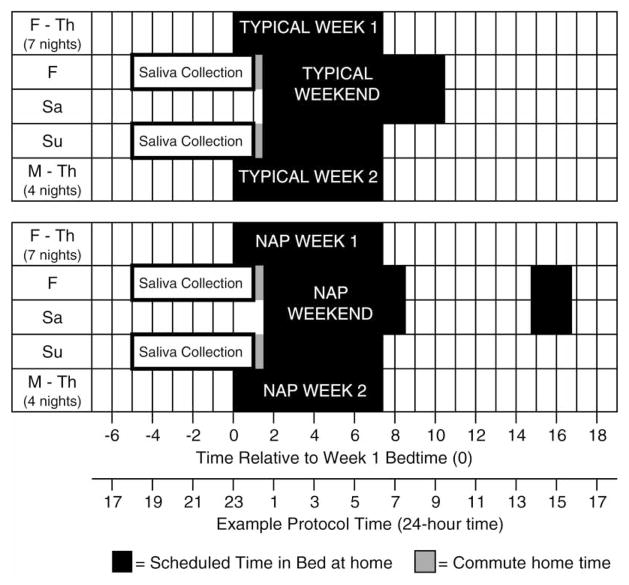FIGURE 1.
The 4-wk, within-subject protocol for Experiment 1 is depicted relative to school night bedtime (0 h). The TYPICAL condition is illustrated on top and the NAP condition on the bottom. The order of conditions was counterbalanced; five completed the TYPICAL condition first and seven completed the NAP condition first. The protocol schedule timing varied slightly between participants. The second x-axis illustrates an exemplary protocol schedule with bedtime at 23:00 h and wake-up time at 06:30 h. For individuals on this schedule, they went to bed at 00:30 h on Friday and Saturday nights of both experimental weekends. On the “TYPICAL” weekend (top), they got out of bed at 09:30 h. On the “NAP” weekend (bottom), they got out of bed at 07:30 h and took a nap from 13:45 to 15:45 h. Salivary melatonin was collected in 30-min intervals in dim light (<20 lux) from 18:00 to 00:00 h before (Friday) and after (Sunday) each experimental weekend to determine DLMO phase. Participants included in Experiment 2 followed the 2-wk TYPICAL protocol. The LIGHT group was instructed to sit in front of a short-wavelength light device for 1 h on weekend mornings and the TYPICAL group had no light and no instruction about light exposure. See text for more detail.

